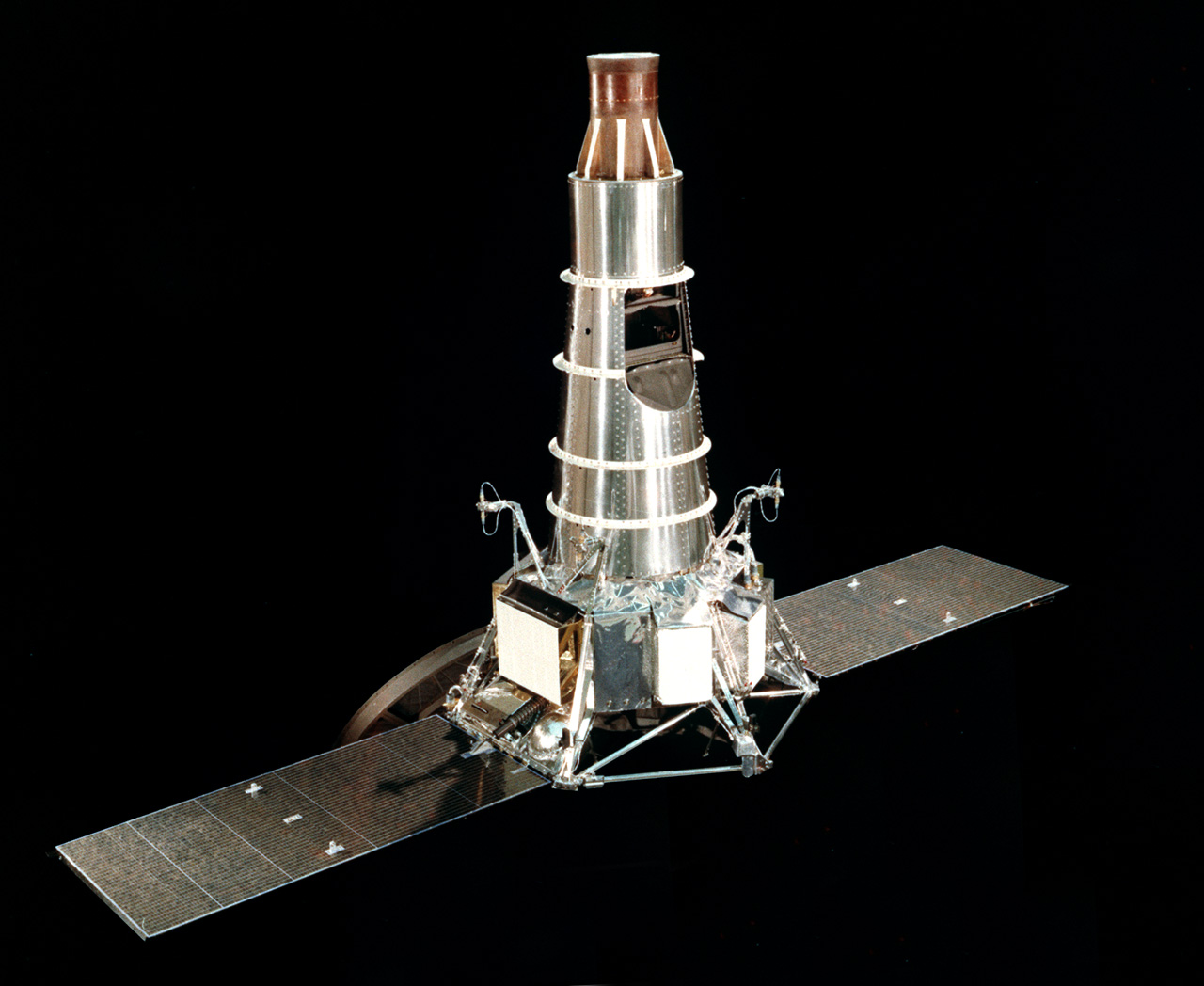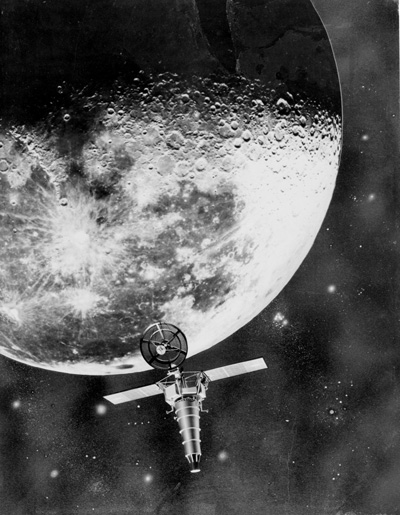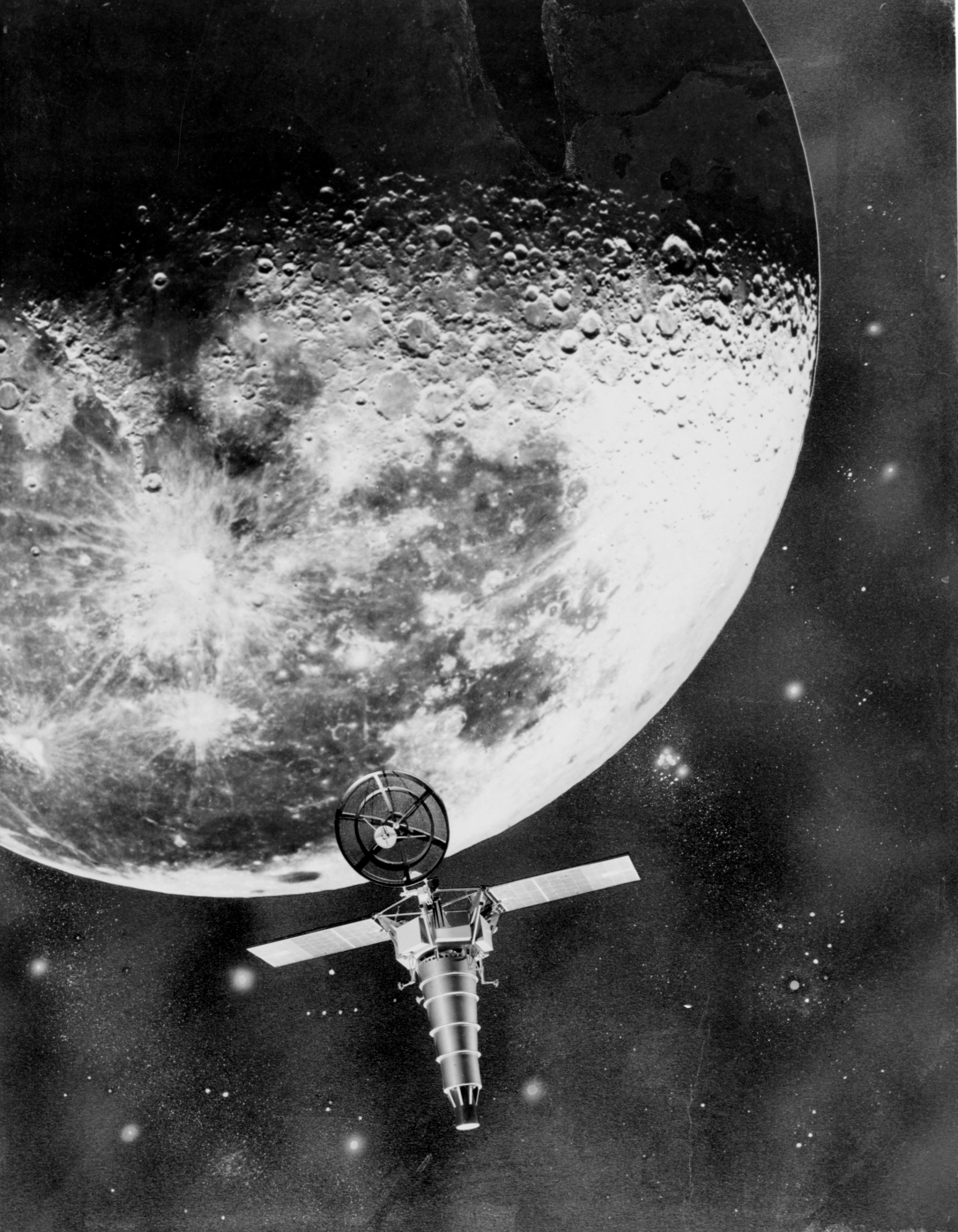Ranger Block III Design (Rangers 6, 7, 8 and 9)

| Credit | NASA/JPL-Caltech |
|---|---|
| Language |
|
Photo of Ranger Block III spacecraft model. This final design for the Ranger Moon program included Rangers 6 through 9.
Ranger’s Block 3 embodied four launches in 1964-65. These spacecraft boasted a television instrument designed to observe the lunar surface during the approach; as the spacecraft neared the Moon, they would reveal detail smaller than the best Earth tele- scopes could show and finally details down to dishpan size.
The first of the new series, Ranger 6, had a flawless flight, except that the television system was disabled by an in-flight accident and could take no pictures.

The next three Rangers, with a redesigned television, were completely successful. Ranger 7 photographed its way down to target in a lunar plain, soon named Mare Cognitum, south of the crater Copernicus. It sent more than 4,300 pictures from six cameras to waiting scientists and engineers.
The new images revealed that craters caused by impact were the dominant features of the Moon’s surface, even in the seemingly smooth and empty plains. Great craters were marked by small ones, and the small with tiny impact pockmarks, as far down in size as could be discerned — about 16 inches (50 centimeters). The light-colored streaks radiating from Copernicus and a few other large craters turned out to be chains and nets of small craters and debris blasted out in the primary impacts.
In February 1965, Ranger 8 swept an oblique course over the south of Oceanus Procellarum and Mare Nubium to crash in Mare Tranquillitatis where Apollo 11 would land 4-1/2 years later. It garnered more than 7,000 images, covering a wider area and reinforcing the conclusions from Ranger 7.
About a month later, Ranger 9 came down in the 75-mile-diameter (90-kilometer) crater Alphonsus. Its 5,800 images, nested concentrically and taking advantage of very low-level sunlight, provided strong confirmation of the crater-on-crater, gently rolling contours of the lunar surface.

